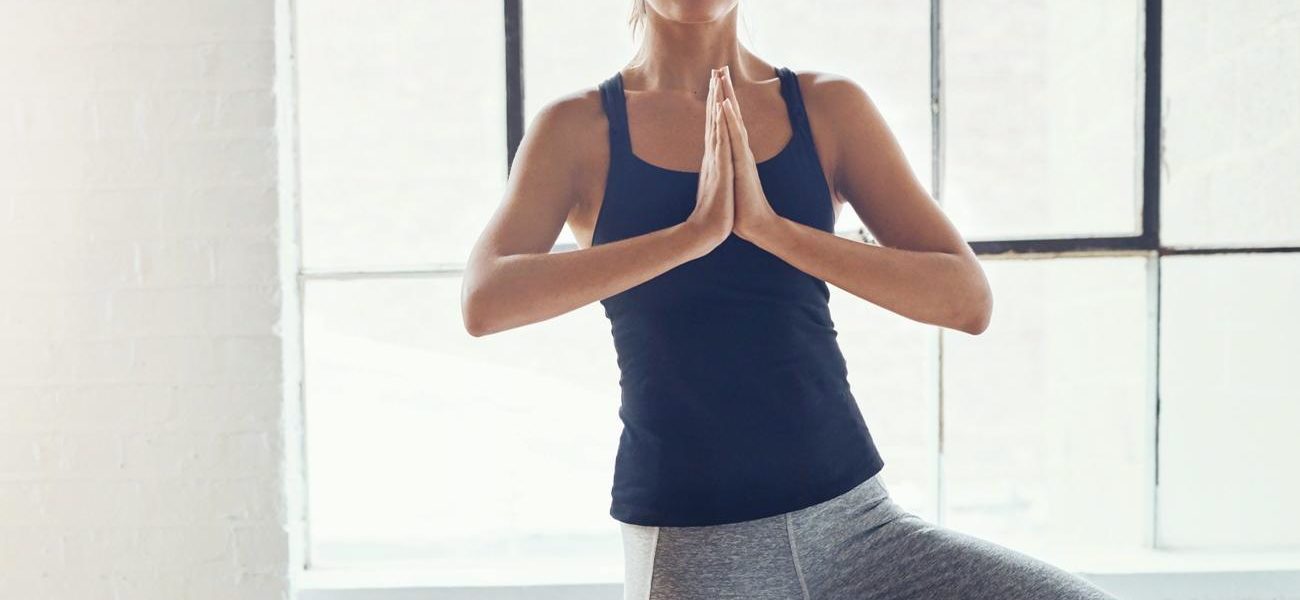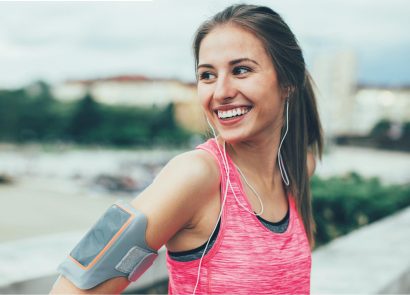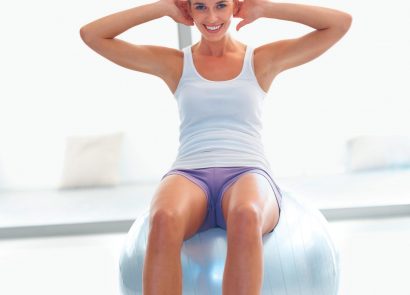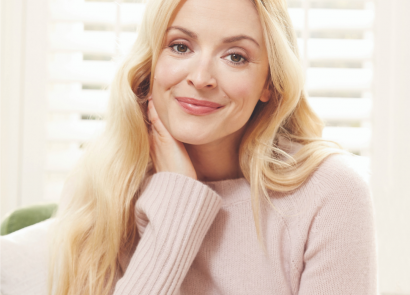Want to banish stress, beat back pain or even reduce your risk of heart disease? The answer is simpler than you think. While some people turn to yoga to sculpt a firmer body or increase their flexibility, the health benefits of this ancient practice go far deeper, as science is beginning to show. A research paper by the School of Health and Related Research at the University of Sheffield shows that yoga not only calms the mind, it also eases conditions as diverse as osteoporosis of the hand, chronic back pain and impaired cognitive function during menopause. It can even reduce the risk of diabetes and help with eating disorders.
The word ‘yoga’ comes from the Sanskrit root ‘yuj’, meaning ‘to yoke’ or ‘unite’, and its soothing effects on the mind and body are one of the reasons so many people take up the practice. Almost as soon as you begin you feel a sense of calm, thanks to the postures and breathing practices which stimulate your parasympathetic nervous system – the rest and digest response. What’s more, the resulting decrease in the stress hormone cortisol lowers blood pressure and protects the heart. Yoga also increases the production of ‘happy neurotransmitters’ serotonin and oxytocin, and even reduces the size of the amygdala, the area in the brain responsible for fear.
But yoga doesn’t just relax you, it can actually alter your DNA, say scientists at Coventry University. Their research, published in the journal Frontiers in Immunology, examined the results of 18 studies over an 11-year period and found that yoga, along with other mindbody interventions (MBIs) such as meditation and t’ai chi, can actually reverse the effects of stress and anxiety which can, via inflammation, lead to a higher risk of cancer, accelerated ageing and depression. Instead, the benefits of yoga “begin at a molecular level and can change the way our genetic code goes about its business,” says lead investigator, Ivana Buric. “Put simply, MBIs cause the brain to steer our DNA processes along a path which improves our wellbeing.”
Getting started with yoga
Ready to give yoga a try? All you need is comfortable clothing and a sticky mat to prevent your feet from slipping in the postures. While hi-tech mats can cost up to £100, a simple one such as YogaMatters Sticky Mat (£17; yogamatters.com) is fine to begin with. Some postures are even more beneficial when combined with props such as blocks, straps and bolsters, as these help you experience the benefits of a pose before you have full flexibility, but you can easily substitute them with a hard-back book, belt or tie and some firm cushions or pillows.
It’s best not to practise on a full stomach – aim for at least a two-hour gap between your last meal and your yoga session – but if you’re feeling peckish, have a banana or some oatcakes and peanut butter as a pre-workout snack about 30 minutes beforehand.
When you’re starting out, it’s important you don’t push through pain. A slight aching sensation as you challenge your flexibility is perfectly normal, but if you feel a sudden or sharp pain, stop straight away and try again another day, moving slowly and gradually into the pose.
As with most new ventures, you’ll make more progress if you practise little and often rather than have one long session once every week or two. If you can, try to get on your mat as often as possible – even five or 10 minutes can make a difference. If you only have a short amount of time to spare, choose a pose from the list below that most suits your current situation, and repeat it a few times until you feel confident with the alignment principles, then use it as often as you need. When you have longer to practise and are familiar with the postures, complete the poses in the given order for a body refresh. Happy bending!
The postures
-

-
Eases headaches Supported child’s pose (Salamba Balasana)
- Place a bolster or thick cushion at one end of your mat then, facing it, sit back on your heels, with feet together and knees wide. Inhale and lengthen your spine, then exhale and gently bend forwards from the hips, then fold your arms over the bolster and rest your forehead on your hands. Draw your shoulders away from your ears, and draw your chin to your chest, to create space around your neck. Let your tail bone release to your heels and your belly soften. Breathe into your back body for up to five minutes.
Benefits: Quietens the mind, stimulates the parasympathetic (rest and digest) system
Also good for: Neck pain and fatigue
Tip: If you don’t have a bolster, find some thick blankets and roll them up to make a great DIY substitute
-

-
Beats low self-esteem Warrior II (Virabhadrasana II)
- Standing sideways on your mat, step your feet wide, turn your right foot out 90° and your left foot in 15°. Align your right heel with your left instep. Spread your toes and root through the outside edge of your left foot. Balance your weight evenly between both feet and check your pelvis is in neutral. Inhale and raise your arms to the sides, palms down. On an exhale, bend your right leg, knee directly above your ankle. If comfortable, turn your head to gaze along your front arm. Take five deep breaths, then repeat on the other side.
Benefits: Focus, mental and physical strength
Also good for: Improves lung capacity and reduces fat around the hips
-

-
Treat back pain Reclining leg raise (Supta PAdangusthasana)
- Lie on your back at right angles to a wall and press the sole of your right foot against the wall. Bring your left knee towards your chest and wrap a strap or belt around the ball of your flexed foot, holding one end in each hand. Straighten and raise your left leg, if possible to vertical, keeping your pelvis even. Walk your hands up the strap until your arms are straight. Spread the toes of both feet, engage your leg muscles and draw your navel towards your spine. Let your shoulders release back and down. Tuck in your chin slightly and breathe deeply and evenly for five to 10 breaths. Release on an exhale and repeat on the other side.
Benefits: Relieves backache and aligns the pelvis
Also good for: High blood pressure
-

-
Dial down stress Reclining bound angle (Supta Baddhakonasana)
- Place a bolster or two cushions lengthwise on your mat and sit with your buttocks against the short end. Bring the soles of your feet together and place a block or pillow under each knee. Gently lower down onto the bolster, resting your head on a folded blanket if more comfortable. Let your arms fall out to the sides, palms upwards. Make any adjustments you need so you can relax fully. Breathe into your belly. Increasing the length of the out-breath, for a couple of minutes. Then let your breathing return to normal and rest in the pose for five to 10 minutes. To come out, use your hands to draw your knees together, shift your bottom to the left, let your knees fall to your right and slowly roll your body to the right and use your hands to come up to sitting.
Benefits: Calms the nervous system and relieves palpitations
Also good for: The menopause, helps balance hormones and reduce mood swings




















